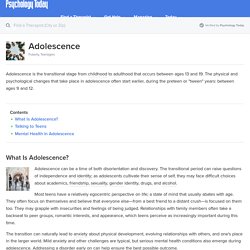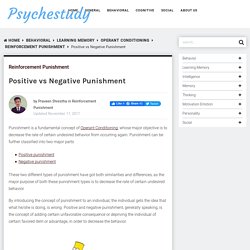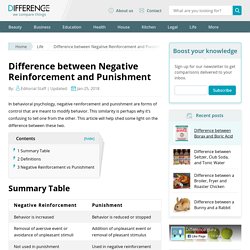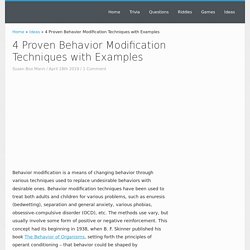

Adolescence. Adolescence can be a time of both disorientation and discovery.

The transitional period can raise questions of independence and identity; as adolescents cultivate their sense of self, they may face difficult choices about academics, friendship, sexuality, gender identity, drugs, and alcohol. Most teens have a relatively egocentric perspective on life; a state of mind that usually abates with age. They often focus on themselves and believe that everyone else—from a best friend to a distant crush—is focused on them too. They may grapple with insecurities and feelings of being judged. Relationships with family members often take a backseat to peer groups, romantic interests, and appearance, which teens perceive as increasingly important during this time. The transition can naturally lead to anxiety about physical development, evolving relationships with others, and one's place in the larger world.
Stages of Adolescence. By: Brittany Allen, MD, FAAP & Helen Waterman, DO Adolescence is the period of transition between childhood and adulthood.

It includes some big changes—to the body, and to the way a young person relates to the world. The many physical, sexual, cognitive, social, and emotional changes that happen during this time can bring anticipation and anxiety for both children and their families. Understanding what to expect at different stages can promote healthy development throughout adolescence and into early adulthood. Early Adolescence (Ages 10 to 13) During this stage, children often start to grow more quickly. Middle Adolescence (Ages 14 to 17) Physical changes from puberty continue during middle adolescence. While they may be able to walk through the logic of avoiding risks outside of these situations, strong emotions often continue to drive their decisions when impulses come into play. 10 Normal Teenage Behavior Problems And How To Handle Them. Image: iStock Understanding Teenage Behavior Problems Dealing with a teenager is not easy.

No matter how good a parent you are, and how great your relationship with your children is, you are likely to face parenting roadblocks when it comes to your teenager. Behavior problems are common in teenagers. But you can deal with them with ease if you are willing to put in the effort to understand what they are going through and what it is that they expect of you. MomJunction gives you insight into teenage behavioral problems and how you can deal with them without straining the relationship with your child. Changes that you may observe during your child's teenage years. The 4 Parenting Styles: What Works and What Doesn’t. By Dr.

Maryann Rosenthal, co-author of Be A Parent, Not A Pushover, reprinted with permission from DrMA.com I believe it’s that overall style or pattern of action — rather than a specific decision — that will most affect a child’s behavior. Generally, psychologists have found that there are two main components of parenting styles. One is responsiveness, or how much independence you’re willing to grant. The other, for lack of a better word, is demandingness — how much strict obedience you require.
These parenting styles fall into a generally accepted four broad categories. AuthoritarianAuthoritarian parents are very strict and controlling. How would these parenting styles work in practice? An Authoritarian parent might say: “No way!
Authoritarian Parenting Style. Permissive Parenting Style. Uninvolved/Neglectful Parenting Style. ParentingYourTeen Handout1. Operant Conditioning. How Reinforcement and Punishment Modify Behavior Operant conditioning, also known as instrumental conditioning, is a method of learning normally attributed to B.F. Skinner, where the consequences of a response determine the probability of it being repeated.
Through operant conditioning behavior which is reinforced (rewarded) will likely be repeated, and behavior which is punished will occur less frequently. By the 1920s, John B. Watson had left academic psychology, and other behaviorists were becoming influential, proposing new forms of learning other than classical conditioning. Skinner's views were slightly less extreme than those of Watson (1913). The work of Skinner was rooted in a view that classical conditioning was far too simplistic to be a complete explanation of complex human behavior. How does Operant Conditioning influence behaviour? Reinforcement & Punishment. What Is Reinforcement in Operant Conditioning? One of the many different ways in which people can learn is through a process known as operant conditioning (also known as instrumental conditioning).1 This involves learning through reinforcement or punishment.

The type of reinforcement used can play an important role in how quickly a behavior is learned and the overall strength of the resulting response. Understanding Reinforcement Reinforcement is a term used in operant conditioning to refer to anything that increases the likelihood that a response will occur. Psychologist B.F. Skinner is considered the father of this theory. For example, reinforcement might involve presenting praise (the reinforcer) immediately after a child puts away her toys (the response).
Positive and Negative Reinforcement. Positive Vs Negative Reinforcement.
Positive Reinforcement. Negative Reinforcements. Punishment in Psychology. Positive vs Negative Punishment. Punishment is a fundamental concept of Operant Conditioning, whose major objective is to decrease the rate of certain undesired behavior from occurring again.

Punishment can be further classified into two major parts These two different types of punishment have got both similarities and differences, as the major purpose of both these punishment types is to decrease the rate of certain undesired behavior. By introducing the concept of punishment to an individual, the individual gets the idea that what he/she is doing, is wrong. Positive and negative punishment, generally speaking, is the concept of adding certain unfavorable consequence or depriving the individual of certain favored item or advantage, in order to decrease the behavior. Difference Between Positive and Negative Punishment.
Negative Punishments. Negative Reinforcement vs Punishment - Difference. By: Editorial Staff | Updated: Jan-25, 2018 In behavioral psychology, negative reinforcement and punishment are forms of control that are meant to modify behavior.

This similarity is perhaps why it’s confusing to tell one from the other. This article will help shed some light on the difference between these two. Summary Table Definitions Negative reinforcement occurs when a behavior is modified by the removal of an aversive event or the prevention of unpleasant stimuli from happening. Learning: Negative Reinforcement vs. Punishment. 4 Proven Behavior Modification Techniques with Examples. Behavior modification is a means of changing behavior through various techniques used to replace undesirable behaviors with desirable ones.

Behavior modification techniques have been used to treat both adults and children for various problems, such as enuresis (bedwetting), separation and general anxiety, various phobias, obsessive-compulsive disorder (OCD), etc. The methods use vary, but usually involve some form of positive or negative reinforcement. This concept had its beginning in 1938, when B. F. So, which is the best method to use when disciplining your teenage child? References.